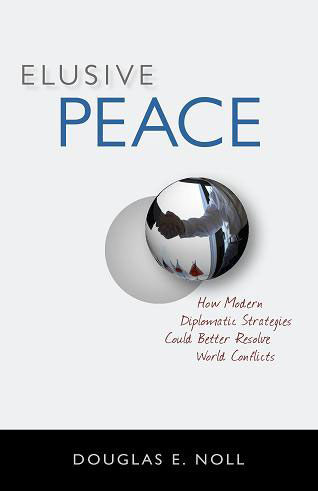Introduction
In September 2010, direct talks between the Israeli government and the Palestinian Authority started. As of the close of the first meeting in Washington, D.C., there was both pessimism and hope that a sustainable and achievable peace agreement can be reached. The pessimism was based on the history of failure between the parties, the continued violence perpetrated by Hamas, the questionable authority of Mahmoud Abbas to bring the Palestinians to peace, and the questionable ability of Binyamin Netanyahu to stop settlement construction. The hope was based on the fact that the parties are once again talking, that the United States is once again engaged in the process, and that the majority the people of the region are weary of war.
The news coverage has focused on the external events—the meetings, the phone calls, the consultations—but has not focused on the actual peace work itself. Most people forget that President Obama made peace in the Middle East a primary foreign policy objective. He announced the appointment of former Senator George Mitchell as special envoy to the Middle East on January 22, 2009, two days after his January 20, 2009 inauguration. Within 24 hours of his presidency, Obama called Middle Eastern leaders to talk about his agenda for peace, and he formally appointed Mitchell as special envoy. Obviously, this was something that had been in the works for some time.
Secretary of State Hillary Clinton has also focused on peace in the Middle East, seeing it as unfinished business from her husband’s administration as well as holding a passion for alleviating the suffering of the people in the region. Secretary Clinton is not afraid to prepare herself, having asked her staff for an exhaustive analysis of all the major peace initiatives, to spot trends, sticking points, and areas of agreement. She has maintained her credibility with both sides and has been persistent. More than half of her telephone calls to foreign countries have been to the Middle East.
Senator Mitchell has said many times, “From my experience, I have formed the conviction that there is no such thing as a conflict that can't be ended. Conflicts are created, conducted, and sustained by human beings. They can be ended by human beings.” His sentiment reflects wisdom that is often missed by international negotiators and diplomats.
Secretary Clinton and Senator Mitchell are distinguished, highly experienced politicians. How much more effective and powerful might they be if their personal mediation skills and experience matched their political and diplomatic skills? This question has rarely, if ever, been asked because it begs an important and overlooked question: Are the skills of the peacemaker qualitatively different than the skills of the diplomat or the politician? I believe the answer is yes. I also believe that if we truly desire peace in our world, our leaders and their envoys must add an entirely new set of skills and knowledge to their repertoire.
What we know about the causes and resolution of human conflict from both a scientific and practical perspective has grown exponentially in the past 20 years. This has developed as a result of the explosive use of mediation around the world to solve a vast array of human conflicts, from commercial disputes in litigation to public policy disputes to mediations between victims and offenders in criminal cases. In addition, our knowledge about human conflict and peace has benefitted from advances in emerging fields such as social neuropsychology and behavioral economics. The ability to watch the human brain process information through techniques such as functional magnetic resonance imaging, transcranial magnetic stimulation, and sophisticated electroencephalography techniques is demonstrating that the core assumptions of law, economics, and the philosophy of human behavior are incomplete. In addition, as researchers devise ever-increasingly clever means of investigating the source and nature of emotions, beliefs, moral development, and decision-making in the brain, mediators are taking the research and applying it to the practical problems of peace. The result is a set of powerful tools that, when used appropriately, can lead us to understand human conflict at a much deeper level. With that understanding, we can approach the problem of peace with a greater degree of subtlety and nuance than ever before achievable.
Is peace really achievable or is it merely an elusive dream of tree-hugging liberals? Follow me for a moment to one of the most unlikely places on the planet to find peace and see for yourself that peace is not a pipe dream. . . .

